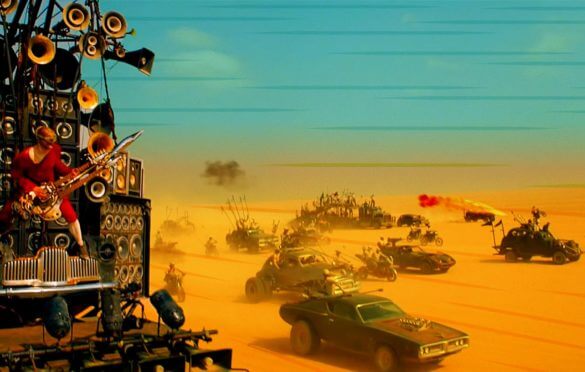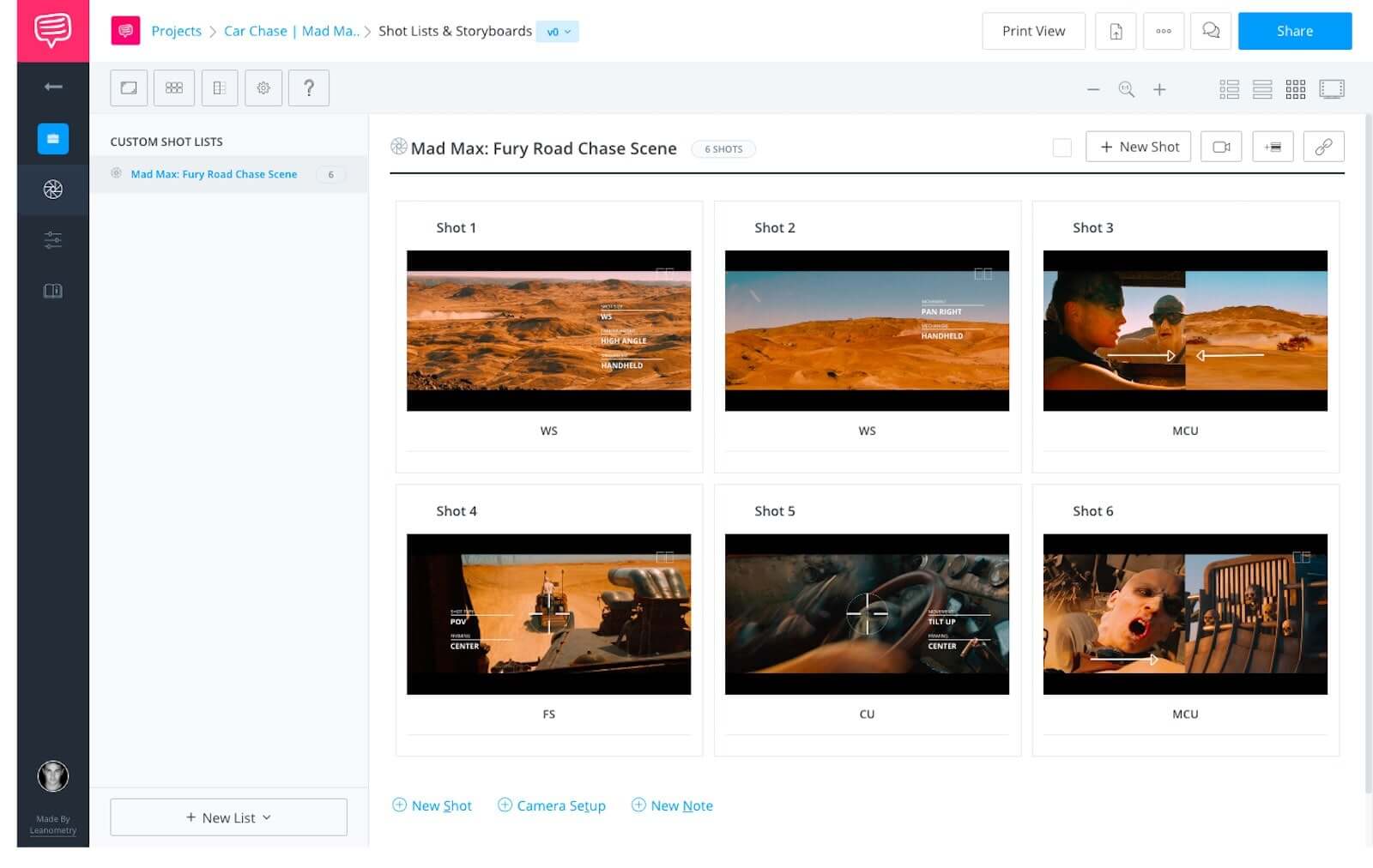Car chase scenes are fantastic, but they are probably one of the most difficult things to capture. Even if you end up with a relatively successful experience on set, how can you be sure it will work in the edit?
In this post, we’re going to show you how George Miller shot listed and cut together some of the best car chase scenes in Mad Max: Fury Road to show you how you can plan your shots and guide the viewer through the chaos.
How to Shoot a Killer Car Chase Scene
BEST CAR CHASE SCENES
Guide viewers through the chaos
Successful chase scenes require more than big stunts and pyrotechnics.
You need to find a way to take something utterly chaotic and guide the viewer through the chaos - all so that we comprehend the situation.
George Miller does this really well in Mad Max: Fury Road by keeping all of the action and camera placement as logical as possible while maintaining the fast-paced and kinetic energy generated by the events.StudioBinder shot list feature
He uses a combination of screen direction, camera movement, stability, and cutting-on-action to guide us through the chaos.
CAR CHASE SCENES
Keep us centered on the actions
The best car chase scenes don’t confuse the viewer.
One of the great things George Miller does is he has his camera department keep important information in the center of the frame, otherwise, your great car chase scene will become unwatchable.
When you have a ton of imagery flying at you at high speed, you can only register a portion of the action, so don’t make things harder on the viewer by making them search around the outskirts of your frame.
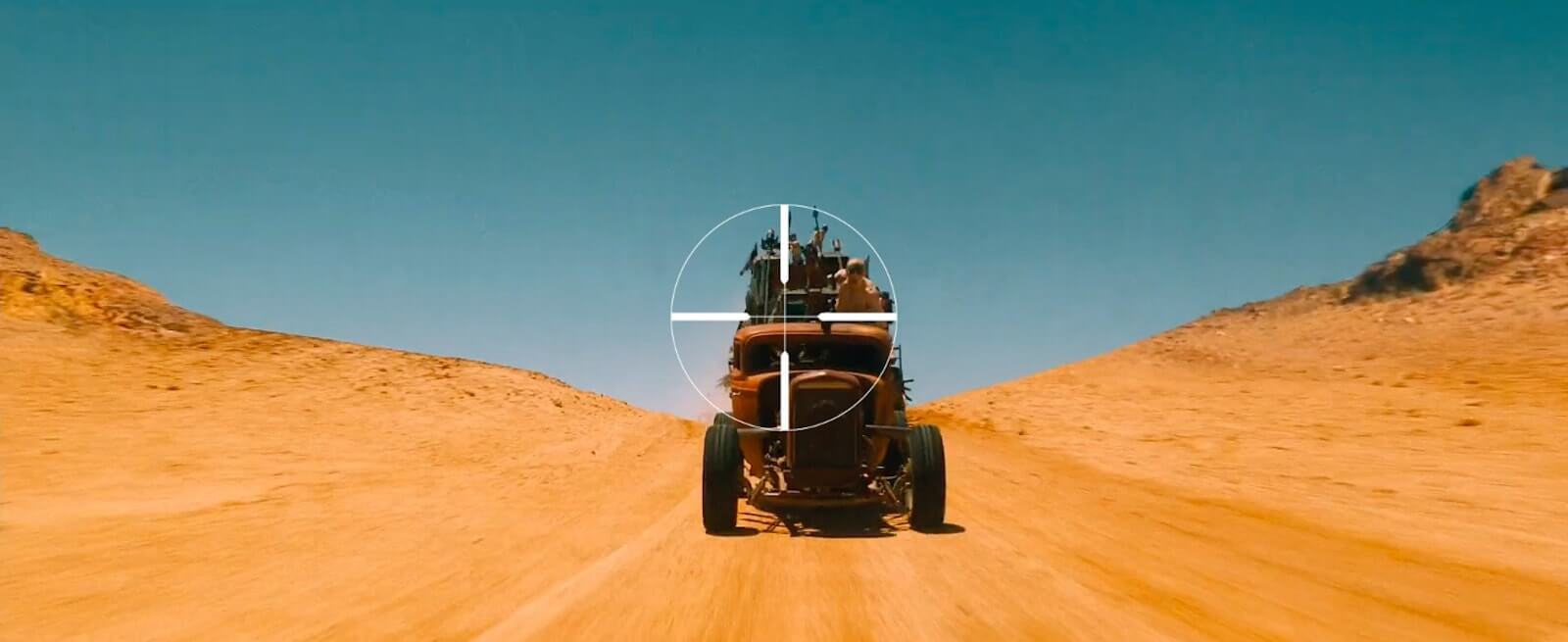

Center your subject in the frame
It seems simple enough, but when you’re moving at high speeds, filming from a vehicle, or flying a drone you will need to actively pay attention to how much of your important action takes place where we can best see it.
StudioBinder shot list feature
This will also give you more options in the edit, which is ultimately what you will need to build the best car chase scene possible.
HOW TO FILM A CAR CHASE
Inform orientation with eye-lines
The best car chase scenes build screen direction and inform orientation through the use of actor eye-lines.
Miller will use an eye-line of a character to either establish or at times shift the viewer’s understanding of screen direction within a scene.
When an actor looks in a certain direction, Miller takes this as an opportunity to cut across the line to where the character is focused.
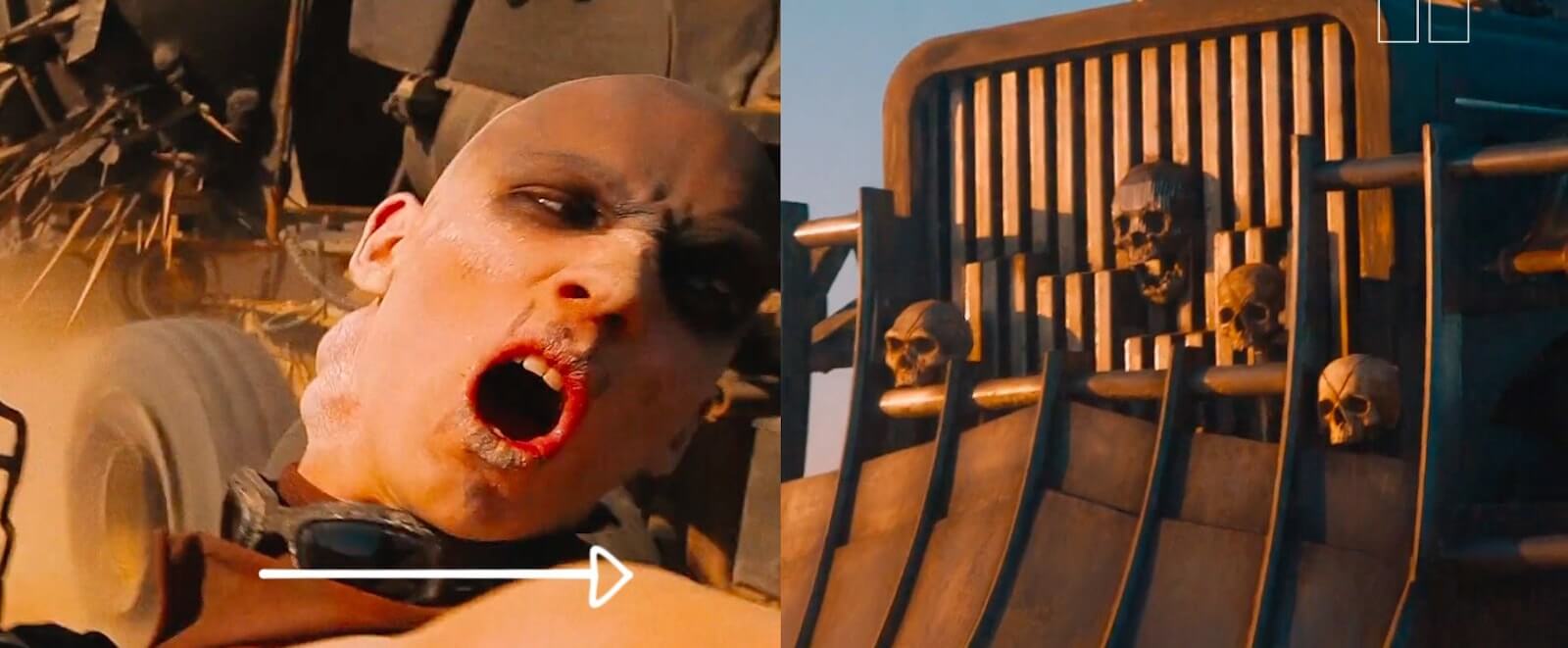

Use eye-lines to break the line
This could be considered a 180-degree line break, but it works because we see the eye-line, and then see to where the actor was looking.
We forgive the line break because there is such deliberate direction of where we should look, and which is confirmed by the next shot we see.
StudioBinder shot list feature
And most important of all, we are not confused.
Why?
Because the filmmakers thought about all of this while they shot listed and cut together their scene.
MAD MAX: FURY ROAD CAR CHASE
Reset orientation with neutral shots
The best car chase scenes will use neutral shots to reorient the viewer, rather than just breaking the line or switching back and forth with some sort of reckless abandon.
Leave that to the vehicles in the scene - not your camera.
A neutral shot can live on either end of the scale.
It is either totally clear what we are seeing.
Or utterly confusing.
Either way, they reset screen direction during the scene.
A good example of a clear neutral shot would be a POV shot.
This is where we cut to a character’s point of view, and thus instinctively know that we are seeing things from their vantage point.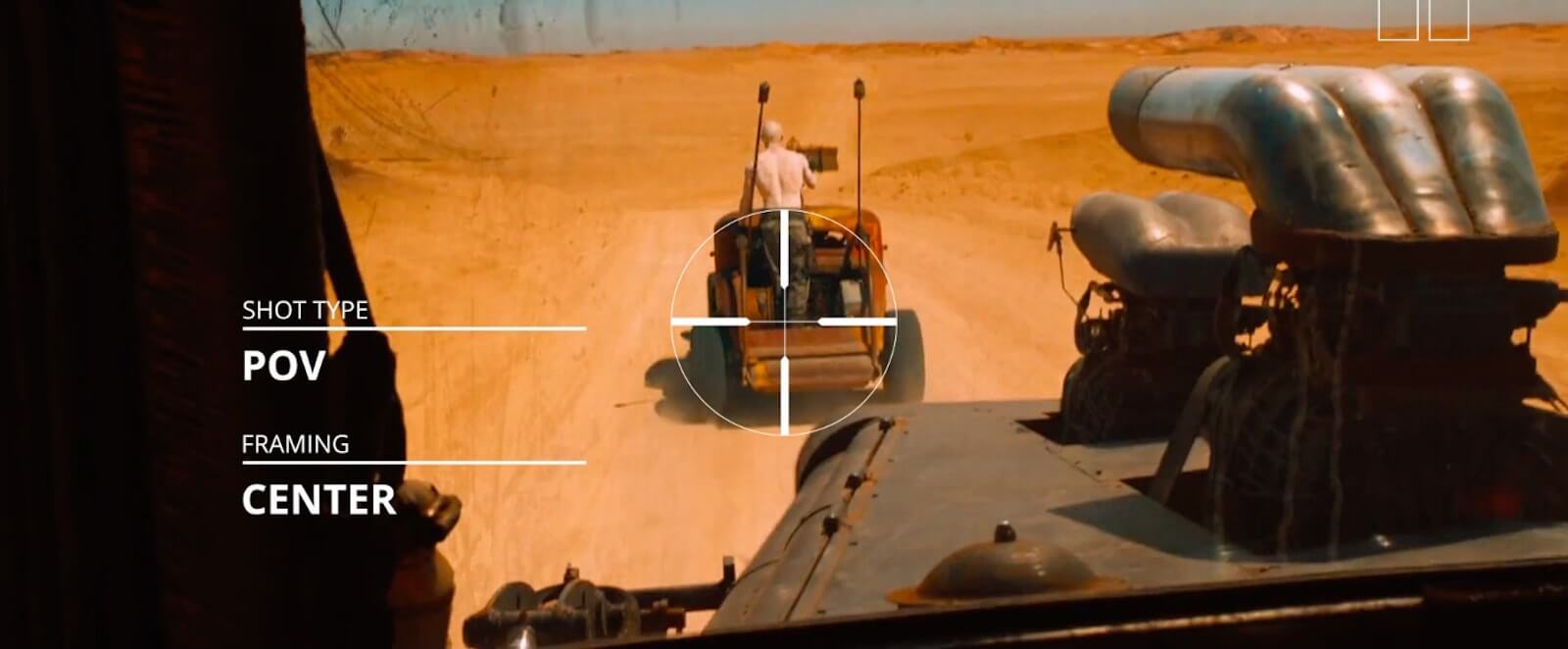

POV shots can be used to reset orientation
A good example of a confusing neutral shot would be something like a whip pan (G. Miller Faux Pas), or a really extreme close up of a hubcap.
You might know it’s a hubcap, but you don’t see enough to make an informed decision on-screen direction - thus it is reset in our mind.
Either way, if you need to cut across the line or change screen direction, you can use these shots to reset our scene orientation.
You can also place shots directly on top of your established 180-degree line, and in turn, gain the same neutral classification and outcome.
StudioBinder shot list feature
Get some of these on the day both to help you change around, and in case you ever do get into trouble in the edit while you cut your car chase scene.
CAR CHASE DIRECTING
Direct the viewer with eye-trace
The best car chase scenes use eye-trace to direct the eyes of the viewer, and to introduce important information in fractions of a second.
Eye-trace is a fancy way of referring to directing the eyes of the viewer, and then using the existing placement of their eyes to introduce new information - because that is the essence of filmmaking.
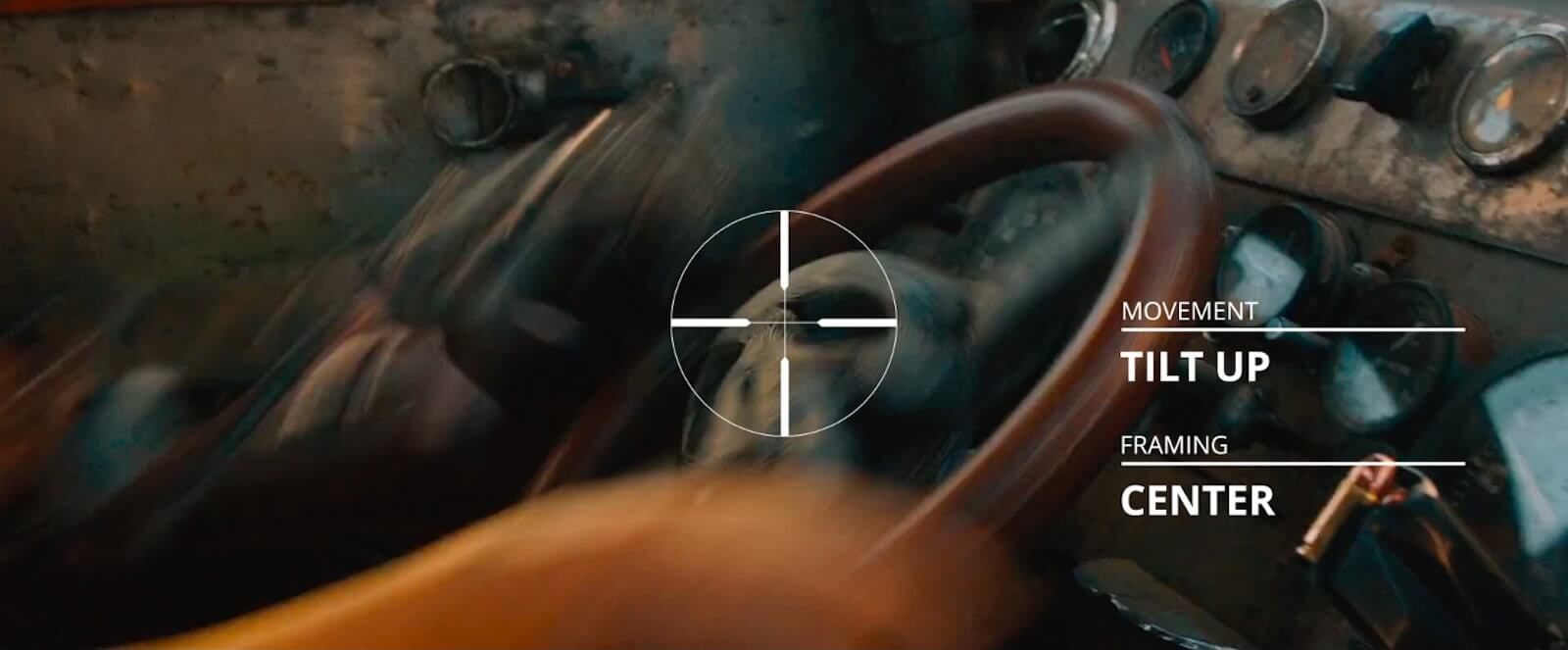

Use eye-trace to your advantage
Knowing that the viewer will be focused on the center of the frame, we can then place new information in that same area to ensure visibility.
While eye-trace is a relatively straightforward concept, you can also combine the advantages of human psychology and the Kuleshov Effect.
An actor looks over at something…
Cut to the side mirror with the reflection of an enemy car...
Cut to the angry driver inside the enemy car.
Position all of this imagery in the same vector of the frame, or in a way that logically draws our eyes to the portion that give us the most information.
That way, you can guide your viewer logically through the action.
Otherwise, the viewer’s mental energy will be spent trying to comprehend what occurs rather than just going along for the ride.
BEST CAR CHASE EVER
Performance block vehicles for subtext
The best car chase scenes use performance blocking for subtext.
Performance blocking is one of the best tools for any filmmaker because it allows you to insert some tasteful subtext into your scenes.
Two characters faced away from one another - the viewer might be able to safely assume these characters are “moving in different directions”.
Your vehicles can be used in the same way, just like Geroge Miller.
At one point in this scene, it appears that the war rig and buzzard vehicle are moving toward each other on a collision course.
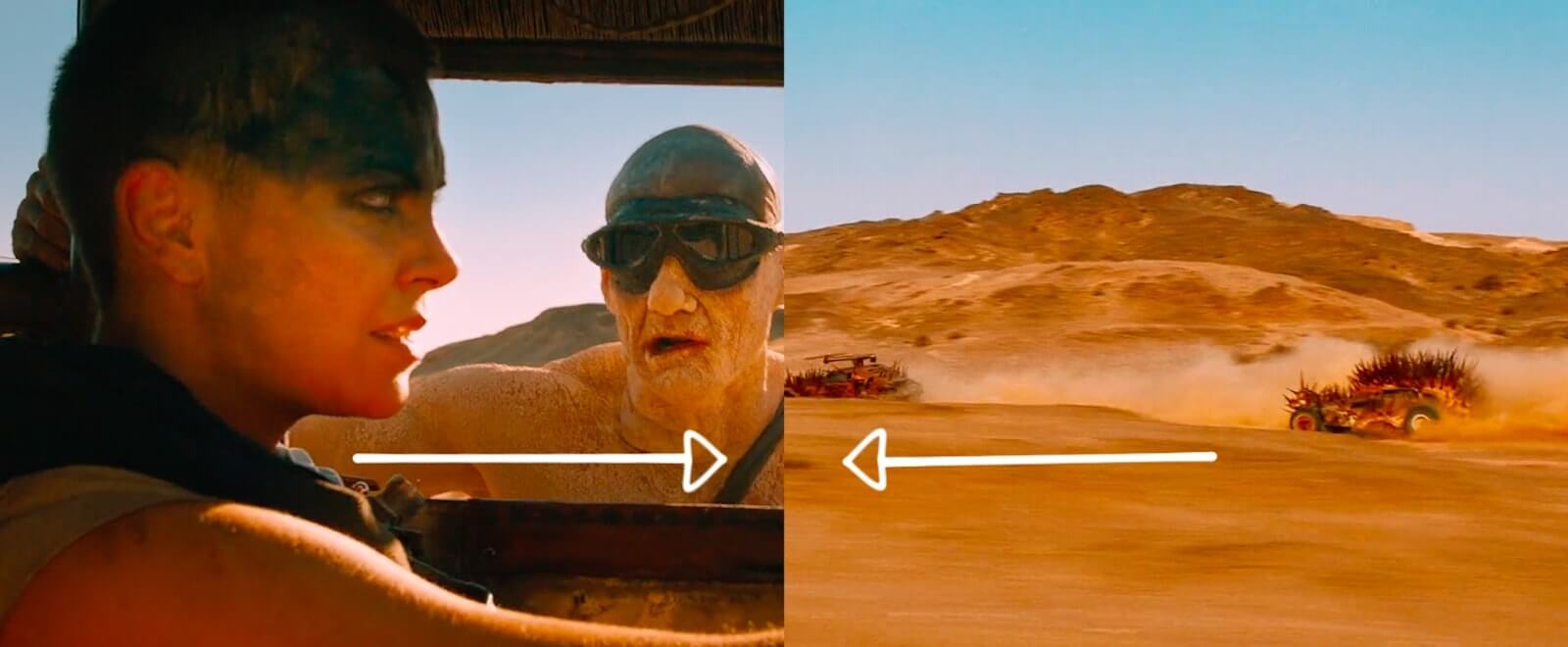

Use subtextual performance blocking with your vehicles
This is done even though the viewer knows that these vehicles, in a practical narrative sense, are moving side-by-side…
Not toward one another.
That is subtextual performance blocking, but instead of using actors…
The filmmakers use the vehicles in their chase.
You could make a really thoughtful car chase film that treats the the chase scenes the same way Crouching Tiger, Hidden Dragon treated fight scenes.
Like an elegant dance.
(Cue: chin scratch)
CAMERA SHOT SIZES
Get Inspired. Explore More Shots.
Master every shot size, and learn unique ways to combine them with angles and movements to take your storytelling to the next level.
CLOSE UP SHOTS
MEDIUM SHOTS
WIDE SHOTS
Up Next
Shot List a Fight Scene like Guy Ritchie: Sherlock Holmes Fight Scene
Now that you have a better idea for how to shot list a car chase sequence that will stay logical and keep you hooked, now it is time to move to another very exciting type of scene popular in filmmaking - Fight scenes.
Read all about How to Shot List Fight Scenes like Guy Ritchie: Sherlock Holmes, where we break down the fight scene with a shot list.
Up Next: Shot List Fight Scenes: Sherlock Holmes →
Showcase your vision with elegant shot lists and storyboards.
Create robust and customizable shot lists. Upload images to make storyboards and slideshows.
